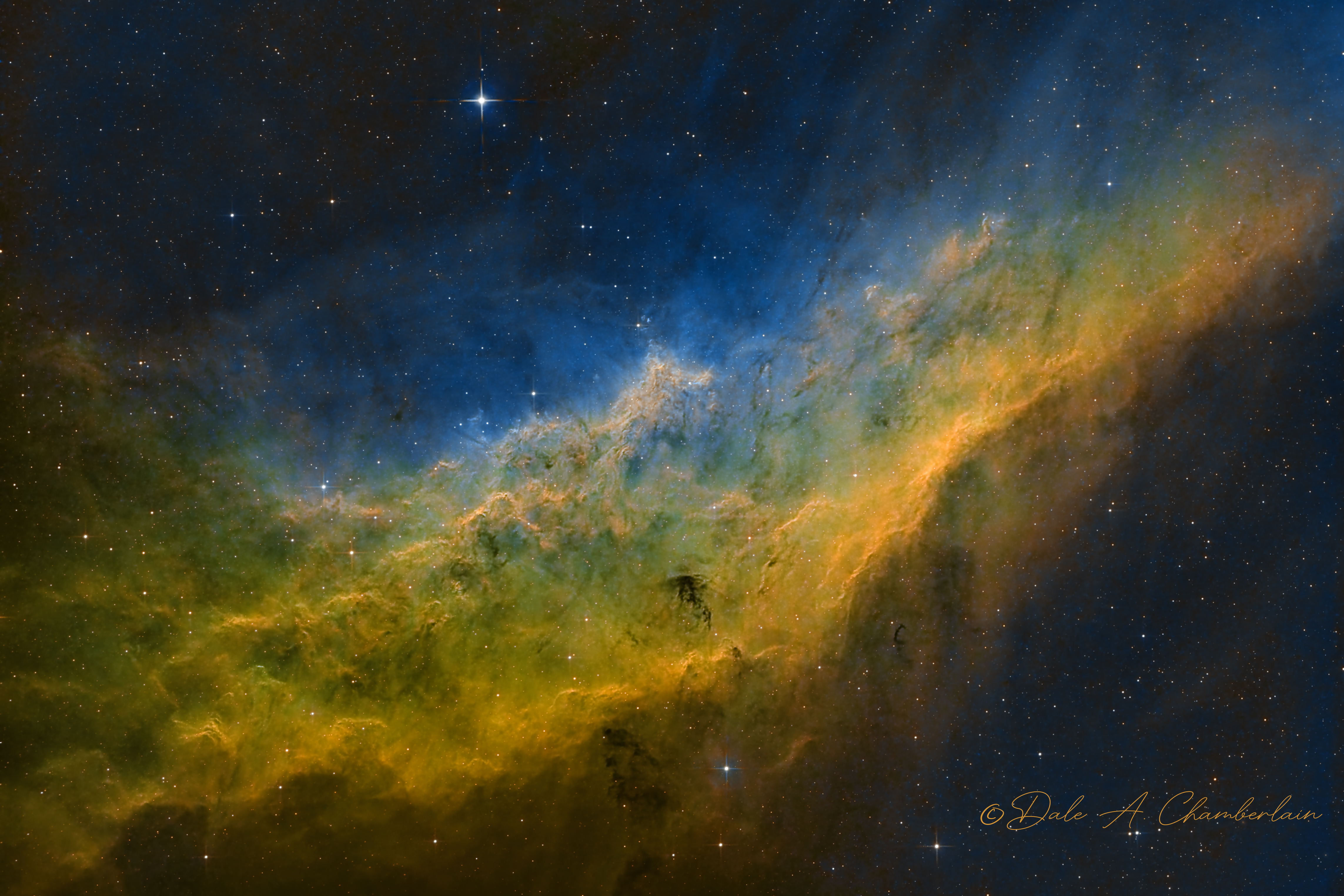
Object: The California Nebula (NGC 1499) is an emission nebula located in the constellation Perseus. It is so named because it appears to resemble the outline of the US State of California on long exposure photographs. It is almost 2.5° long on the sky and, because of its very low surface brightness, it is extremely difficult to observe visually.
It lies at a distance of about 1,000 light years from Earth. Its fluorescence is due to excitation of the Hβ line in the nebula by the nearby prodigiously energetic O7 star, Xi Persei (also known as Menkib, seen at top left of center).
The California Nebula was discovered by E. E. Barnard in 1884.
By coincidence, the California Nebula transits in the zenith in central California as the latitude matches the declination of the object. (Courtesy of Wikipedia)
Taken: January 1, 2020
Telescope: Skywatcher Esprit 80 ED Triplet APO Refractor
Mount: Paramount ME II unguided
Camera: ZWO ASI1600MM-Pro (cooled to -15C; unity gain) Bin 1×1.
Focuser: Starizona Micro Touch Autofocuser
Rotator: Optec Pixys LE camera field rotator
Filters used: Hydrogen-alpha, Oxygen-III and Sulphur-II on a ZWO 8 position filter wheel
Exposures: 36×300 sec.Hydrogen-alpha, 28×300 sec. Oxygen-III and 23×300 sec. Sulphur II for a total exposure time of 7.25 hours; calibrated with 40 dark frames, 40 flat frames with 40 dark-flats
Palette: SHO (Hubble)
Seeing Conditions:
Processed with PixInsight and Photoshop CC 2019 (Weighted Batch Pre-processing script used for calibration, evaluation, registration and integration of subframes)